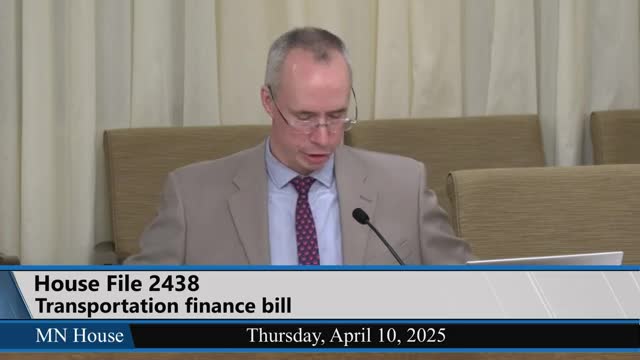Minnesota lawmakers approve extensive changes in motor vehicle dealer regulations
April 11, 2025 | 2025 Legislature MN, Minnesota
Thanks to Scribe from Workplace AI , all articles about Minnesota are free for you to enjoy throughout 2025!

This article was created by AI using a video recording of the meeting. It summarizes the key points discussed, but for full details and context, please refer to the video of the full meeting. Link to Full Meeting
One of the standout discussions centered on Section 12, which proposes raising the electric vehicle surcharge and altering how the funds are allocated. This move aims to bolster the state's commitment to electric vehicle infrastructure and sustainability. Additionally, Section 16 introduces a specialty license plate specifically for rental motor vehicles, a change that could enhance revenue and promote rental services.
The committee also addressed dealer regulations, with Section 11 allowing dealers from neighboring states to operate as if they were licensed in Minnesota. This change is expected to streamline operations and foster competition among dealers. Furthermore, modifications to background check requirements for dealers were discussed, ensuring that safety remains a priority in vehicle sales.
Another notable proposal is the expansion of license revocation criteria for speeding violations. Section 30 now includes revocations for drivers exceeding the speed limit by 35 miles per hour, a significant tightening of existing laws aimed at enhancing road safety.
The meeting also touched on various administrative changes, including the introduction of online renewal for driver's licenses and identification cards, making the process more accessible for residents.
As these proposals move forward, they signal a comprehensive effort by Minnesota lawmakers to adapt transportation policies to contemporary needs, focusing on safety, sustainability, and efficiency. The anticipated outcomes of these discussions could reshape the landscape of vehicle regulation in the state, aligning with broader environmental goals and improving public safety measures.
Converted from House Transportation Finance and Policy Committee 4/10/25 meeting on April 11, 2025
Link to Full Meeting
Comments
View full meeting
This article is based on a recent meeting—watch the full video and explore the complete transcript for deeper insights into the discussion.
View full meeting


